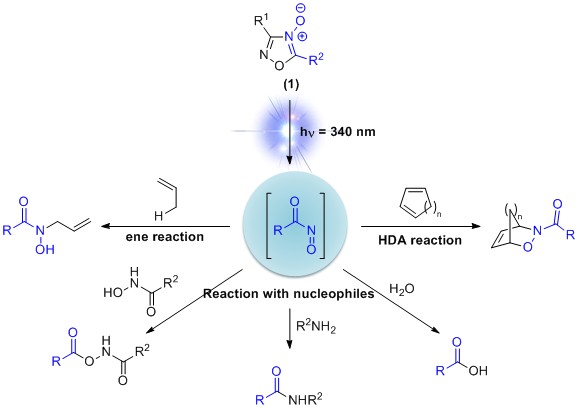Photocleavage of 1,2,4-oxadiazole-4-oxide: A powerful tool for organic synthesis.
Nitrosocarbonyl species are very reactive compounds that have found many applications in organic synthesis1. These intermediates are involved in several useful reactions whose products serve as a versatile platform for further transformations.

The most common method to access to these molecules is by oxidation of the corresponding hydroxamic acid which prevents their use for sensitive substrates. In 1997, Caramella et al. showed that photolysis of 1,2,4-oxadiazole-4-oxide 1 allowed the smooth formation of these reactive intermediates2. This new method allows an easy access to the useful nitrosocarbonyl species without using any harsh conditions and could find many unique applications in organic synthesis. The first part of the project focuses on the development of a more robust and scalable synthetic road to access to 1,2,4-oxadiazole-4-oxide 1. Once a reliable method will have been established, synthetic applications of photolysis of 1 will be addressed.
[1] Bodnar, B. S.; Miller, M. J. Angew. Chem. Int. Ed. 2011, 50, 5630-5647.
[2] Quadrelli, P.; G., I. A.; Falzoni, P.; Caramella, P. Tetrahedron 1997, 53, 1787-1796.